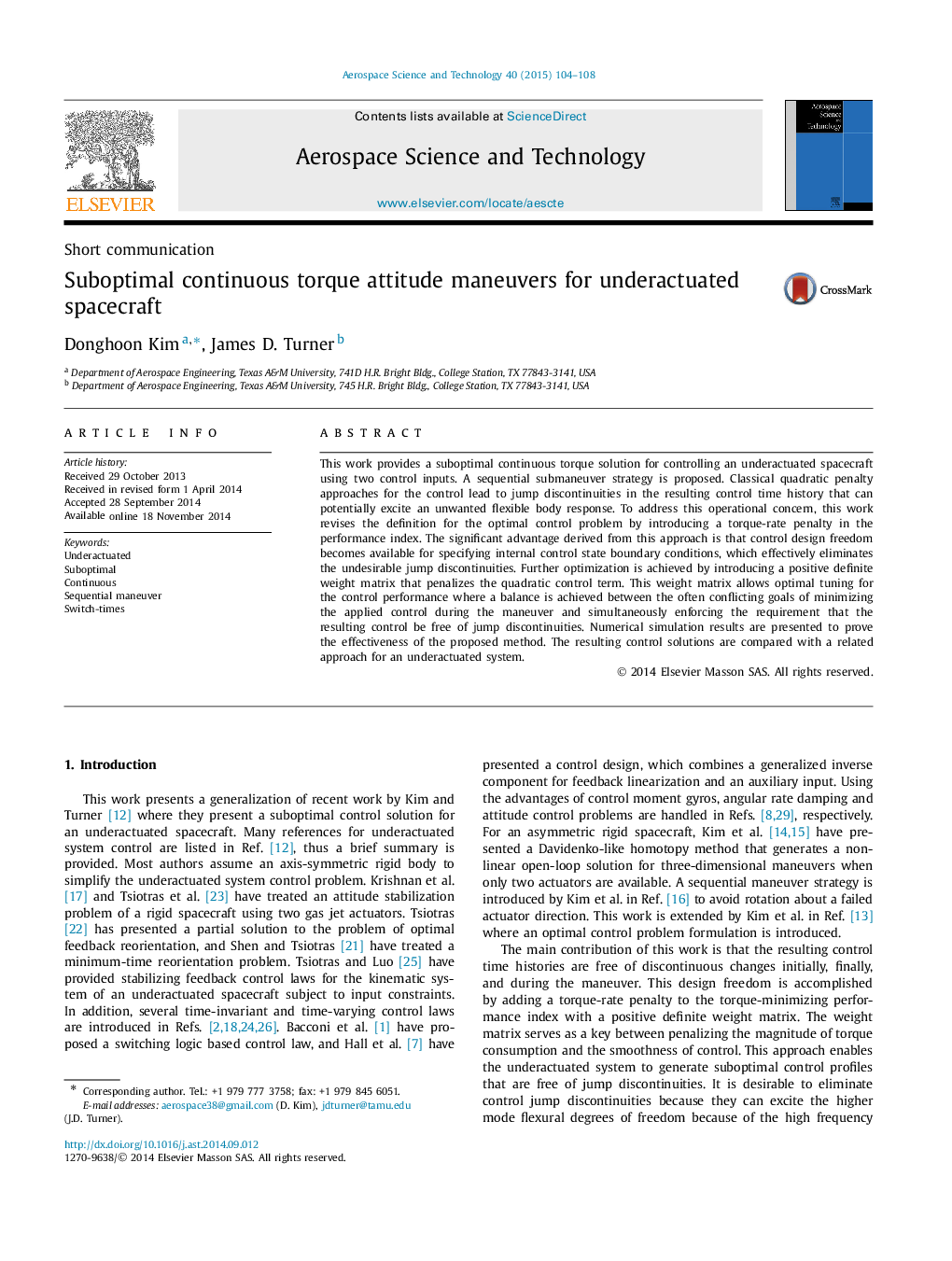| Article ID | Journal | Published Year | Pages | File Type |
|---|---|---|---|---|
| 1717767 | Aerospace Science and Technology | 2015 | 5 Pages |
This work provides a suboptimal continuous torque solution for controlling an underactuated spacecraft using two control inputs. A sequential submaneuver strategy is proposed. Classical quadratic penalty approaches for the control lead to jump discontinuities in the resulting control time history that can potentially excite an unwanted flexible body response. To address this operational concern, this work revises the definition for the optimal control problem by introducing a torque-rate penalty in the performance index. The significant advantage derived from this approach is that control design freedom becomes available for specifying internal control state boundary conditions, which effectively eliminates the undesirable jump discontinuities. Further optimization is achieved by introducing a positive definite weight matrix that penalizes the quadratic control term. This weight matrix allows optimal tuning for the control performance where a balance is achieved between the often conflicting goals of minimizing the applied control during the maneuver and simultaneously enforcing the requirement that the resulting control be free of jump discontinuities. Numerical simulation results are presented to prove the effectiveness of the proposed method. The resulting control solutions are compared with a related approach for an underactuated system.
